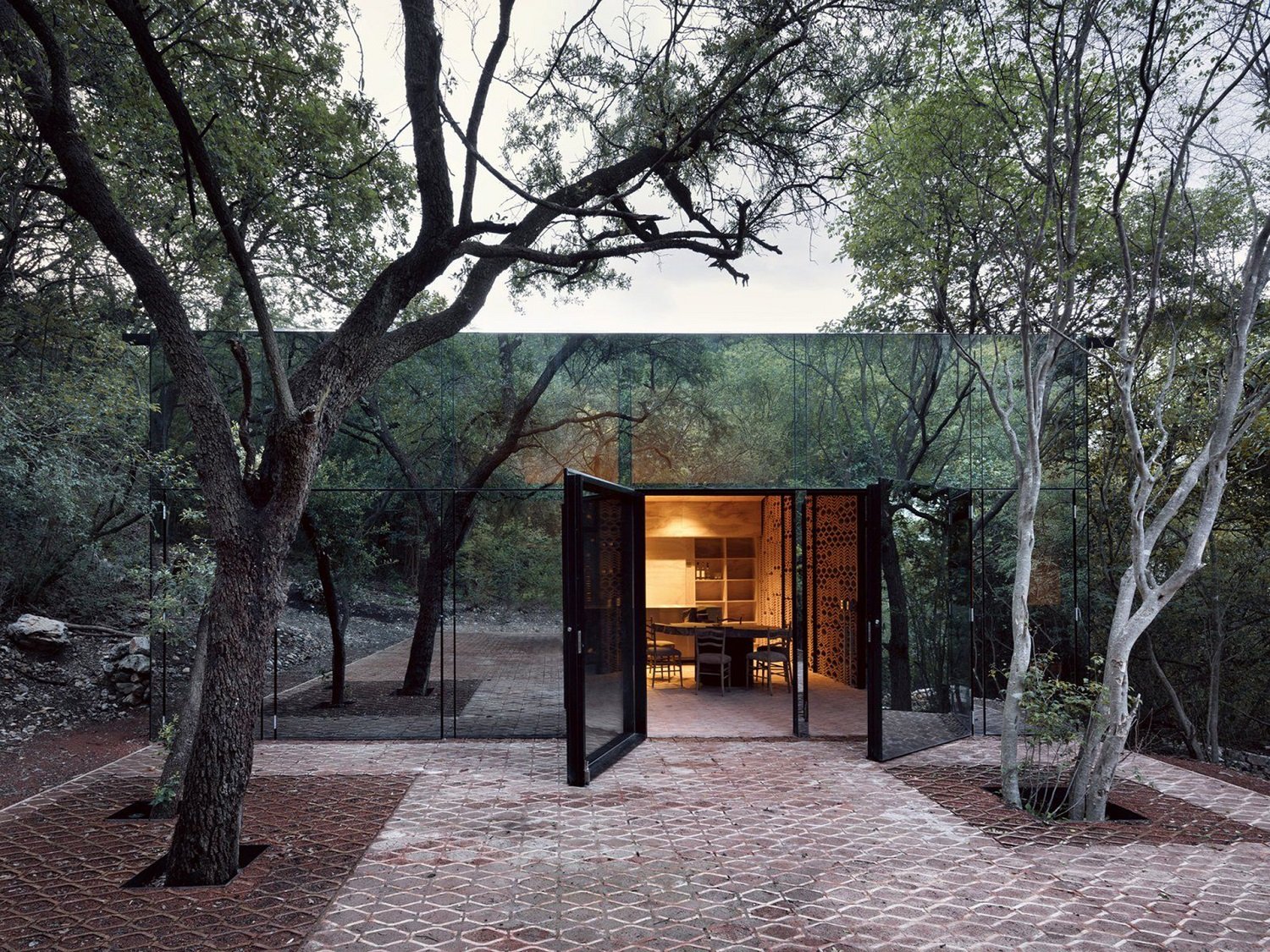#11308. Glass Pavilion in the Forest: Transparent Facade as a Boundary Between Architecture and Nature
Before us is a striking example of modern architecture where the glass facade becomes the main element of dialogue between the artificial environment and natural surroundings. The pavilion presents itself as a minimalist glass structure with large sliding panels that blur the boundary between interior and exterior.
The building's facade is almost entirely made of glass, creating an effect of "disappearing architecture." Particularly attractive are the glass doors in the central part which, when opened, transform the structure into an extension of the surrounding forest. Perforated elements on the interior walls create an interesting play of light and shadow, adding depth to the transparency of the main facade.
The paving of reddish stone laid in a geometric pattern forms a distinctive platform around the pavilion that organically fits into the forest landscape. The architect deliberately preserved existing trees, integrating them into the site design, which enhances the sense of harmony with nature.
In your own home, a similar approach to facade design can be adapted through the use of large glass surfaces that create a visual connection with the environment. Perforated panels or screens can add privacy without blocking light. Using natural materials for paving and preserving existing vegetation will help achieve the same effect of integrating architecture into the natural context.
